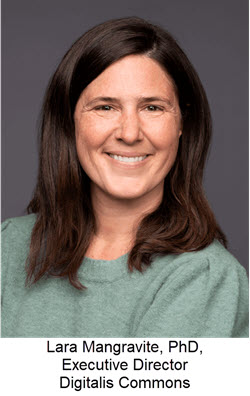 More than a decade ago, a young engineer named Sona Shah stepped into a classroom in rural Kenya—and the beginning of a life-changing journey. What she witnessed there didn’t just shape her understanding of global health disparities; it set her on a path to build solutions for those often left behind. Today, as CEO and Co-Founder of Neopenda, Shah is leading a growing team that’s redefining how clinical care is delivered in low-resource settings around the world. The company’s mission is simple but urgent: develop innovative, sustainable medical technologies that make high-quality care accessible to everyone.
More than a decade ago, a young engineer named Sona Shah stepped into a classroom in rural Kenya—and the beginning of a life-changing journey. What she witnessed there didn’t just shape her understanding of global health disparities; it set her on a path to build solutions for those often left behind. Today, as CEO and Co-Founder of Neopenda, Shah is leading a growing team that’s redefining how clinical care is delivered in low-resource settings around the world. The company’s mission is simple but urgent: develop innovative, sustainable medical technologies that make high-quality care accessible to everyone.
Shah’s inspiration for Neopenda was born from lived experience. After earning her degree in chemical engineering, she spent time teaching in western Kenya, where preventable illness and lack of access to healthcare were daily realities. “That experience planted a seed,” she said. “I couldn’t stop thinking about the kids I had taught, and the families around them who deserved more.” Returning to the U.S., Shah pursued a master’s in biomedical engineering at Columbia University, where she met her co-founder, Teresa Cauvel. A needs-assessment trip to Uganda exposed the two to hospitals filled with critically ill newborns, overwhelmed nurses, and donated medical equipment that sat broken and unused. “It became crystal clear that the issue wasn’t just a lack of resources—it was a lack of thoughtful design,” she said.
This realization laid the foundation for neoGuard™, Neopenda’s flagship product: a wearable, clinical-grade vital signs monitor designed for low-resource environments. “We didn’t want to create just another device—we wanted to build something with and for the clinicians on the frontlines,” Shah explained. Designed to monitor heart rate, respiratory rate, oxygen saturation, and temperature, neoGuard is battery-powered, lightweight, and built to function in settings where reliable power and infrastructure are not guaranteed.

 WINNIPEG, Manitoba, May 01, 2025 (GLOBE NEWSWIRE) — Today, Emergent BioSolutions Inc. (NYSE: EBS) announced a maximum three-year agreement with a value of approximately $65 million to supply the Ontario Ministry of Health with NARCAN® Nasal Spray for the Ontario Naloxone Program (ONP). Since 2018, Emergent has supported the Ontario Ministry of Health to provide access to NARCAN® Nasal Spray across the province. NARCAN® Nasal Spray is designed to reverse the effects of an opioid poisoning in minutes and is the only 4 mg, intranasal naloxone spray in Canada with a shelf life of four years (48 months).
WINNIPEG, Manitoba, May 01, 2025 (GLOBE NEWSWIRE) — Today, Emergent BioSolutions Inc. (NYSE: EBS) announced a maximum three-year agreement with a value of approximately $65 million to supply the Ontario Ministry of Health with NARCAN® Nasal Spray for the Ontario Naloxone Program (ONP). Since 2018, Emergent has supported the Ontario Ministry of Health to provide access to NARCAN® Nasal Spray across the province. NARCAN® Nasal Spray is designed to reverse the effects of an opioid poisoning in minutes and is the only 4 mg, intranasal naloxone spray in Canada with a shelf life of four years (48 months).








